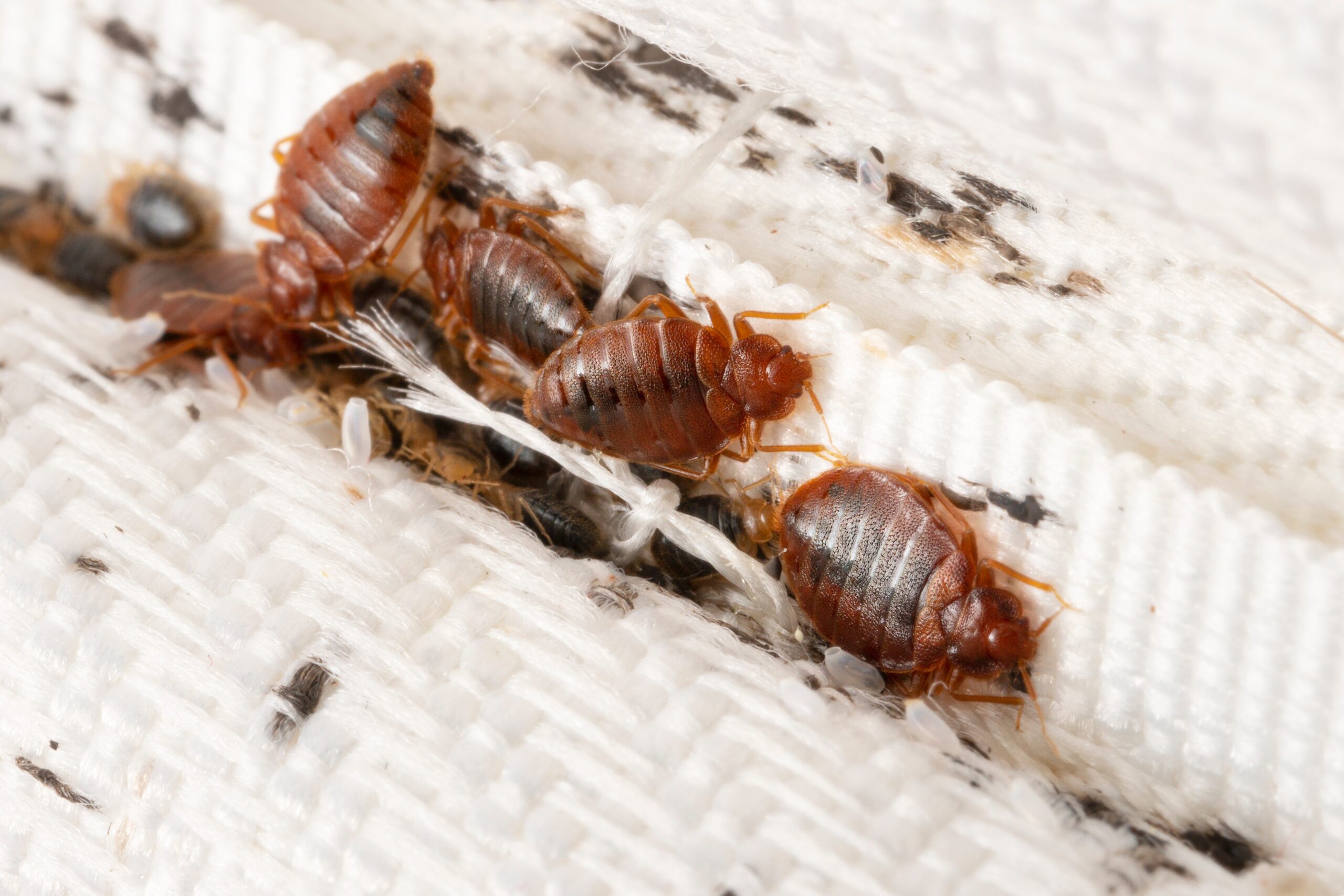BED BUGS
Your Bed Bug problem, Gone For Good, Guaranteed.
Talk to an Expert
We’ll be in touch to personalize your pest protection plan:

DESCRIPTION:
___
Bed bugs are flat, reddish-brown, oval insects about 3/16-inch long or the size of an apple seed. They appear swollen and reddish after a blood meal. A common misconception is that they are not visible to the naked eye. The name ‘bed bug’ is derived from the insect’s preferred habitat infesting houses and especially beds or other common areas where people may sleep.
BIOLOGY:
___
Females can deposit one to five eggs a day, and may lay 200 to 500 eggs in a lifetime. Under normal room temperatures and with an adequate food supply, bed bugs can live over 300 days.

HABITS:
___
Bed bugs hide in cracks and crevices including mattress seams, sheets, furniture, behind baseboards, electrical outlet plates and picture frames. Often found in hotels, where they can travel from room to room and in visitors’ luggage.
Bedbugs are bloodsucking insects. Though they are not strictly nocturnal, bed bugs are mainly active at night and are capable of feeding unnoticed on their hosts. Their peak feeding period is about an hour before sunrise. Bedbugs may attempt to feed at other times if given the opportunity and have been observed feeding during all periods of the day. They reach their host by walking, or sometimes climb the walls to the ceiling and drop down on feeling a heat wave. Bedbugs are attracted to their hosts by warmth and the presence of carbon dioxide. The bug pierces the skin of its host with two hollow feeding tubes. With one tube it injects its saliva, which contains anticoagulants and anesthetics, while with the other it withdraws the blood of its host. After feeding for about five minutes, the bug returns to its hiding place. The bites cannot usually be felt until some minutes or hours later, as a dermatological reaction to the injected agents, and the first indication of a bite usually comes from the desire to scratch the bite site. Although bedbugs can live for a year or eighteen months without feeding, they normally try to feed every five to ten days. Blood spotting on mattresses and nearby furnishings are also signs of a bedbug.
